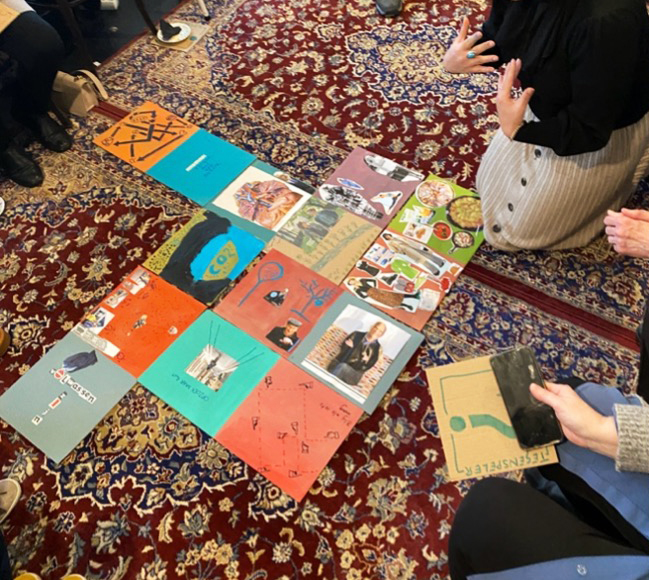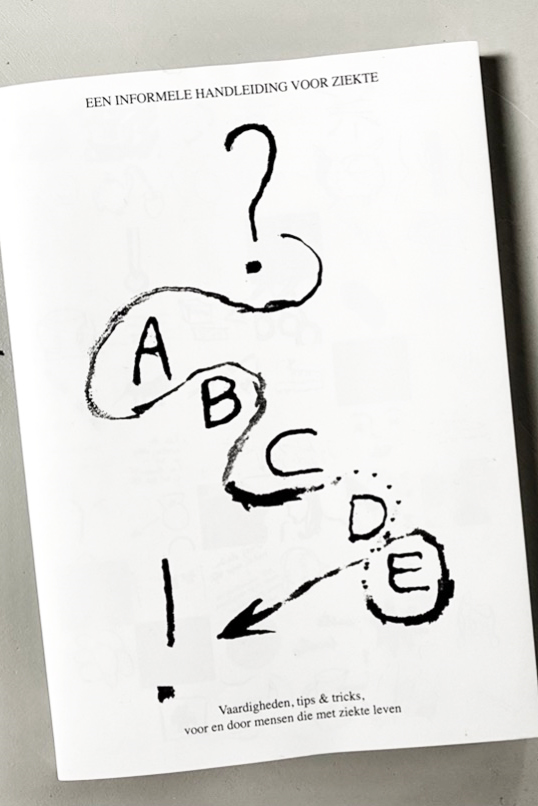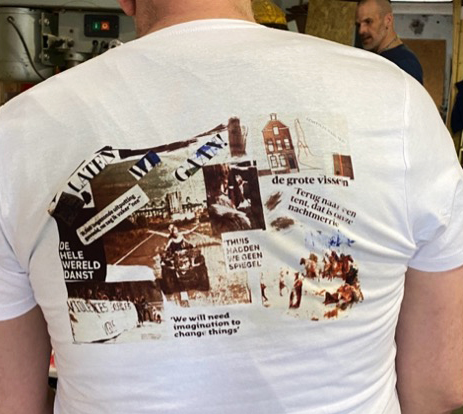What is work?
We live in a society where doing waged work is valued above everything else, giving social standing and a self-worth. Those who do not – cannot – participate in the labour market lack that appreciation and often experience social exclusion. But what exactly is work? Why are many difficult tasks not seen as work, and what would be the benefits of doing so? These are the questions with which visual artist Philippine Hoegen started the PD research project Performing Working a year ago.
Triangulation
During the lockdown of the covid pandemic, Hoegen became fascinated by the complex triangular relationship between work, identity and performance. Together with artistic researcher Julia Reist and designer Miriam Hempel, she began analysing that relationship through the project "What is Work?" at Kunsthal Gent. "But the more I discovered, the more questions I had," says Hoegen. "This sowed the seeds of my obsession with issues around working or not working."
First PD candidate
In May '23, she started as the first PD candidate at HKU (the University of Arts Utrecht), as part of a national pilot. The introduction of the Professional Doctorate makes it possible to follow a doctoral path at the HKU which is similar to a university PhD. However, there are differences in the way of doing research: Hoegen does practice-based design research, using performance as a research method. "I look at work through the lens of performance and at performance through the lens of work," Hoegen says.

Making thinking and sharing
Through artistic interventions in different contexts, she is gathering input on the definition, meaning and sense of work. Besides performances, these are often workshops and co-creative sessions where painting, drawing, writing and collaging are done in collectivity, around specific questions: "We explore by making. By putting things on paper in text and image, knowledge becomes concrete and it becomes easier to reflect on it. I try to create the conditions in which people can make, can think through making and can share in different ways."
Manual for illness
It started with a project in collaboration with the UMCU (University Medical Centre Utrecht), with a focus group of chronically ill people. On Hoegen's initiative, they got to work on the question of the extent to which being sick is also a form of work. "You can see illness as a kind of hidden work. What happens when we make that invisible labour explicit?" Together they developed 'An informal manual for illness', in which those involved notated the skills and tips & tricks one needs for living with illness. Part of that group is now working on a follow-up project, seeking a new form for participatory research. In co-creative sessions, they are looking for a working method in which they, as patients, are not just subjects of a research project, but can direct it themselves.

Equity in collaboration
Striving for more equity in collaborations between researchers and participants has gradually become an important part of PD research. "The beginning of making invisible work visible is the recognition and acknowledgement that what someone does is work. In addition, having more agency within projects and research that someone participates in is important," Hoegen said. Therefore, the group is now working on a blueprint for research projects that advocates a 'more than participatory' approach: everyone who participates contributes on an equal footing and should be able to reap the benefits of their own work. The idea is that at the moment you start seeing stories about living with an illness as knowledge and patient participation as work, a more inclusive system can emerge.
Homelessness
Another topic Hoegen has been working on for some time is homelessness. "That is even more an area that no one associates with work, but that actually is terribly hard work," she says. Hoegen, together with the Straat Consulaat in The Hague and artist Bo Stokkermans, initiate meetings with people dealing with homelessness. The Straat Consulaat is committed to the advocacy and support for homeless people, Bo Stokkermans has (voluntary) experience with homelessness. In March, attendees made drawings, collages and texts about prejudices around homelessness and printed them on T-shirts. In response to participants' wishes to be able to write down their own stories or work on a manifesto, this was followed up by a writing workshop by writer and editor Veerle Driessen in April.

Go
The work that has been made, the publications, (video) documentation and reports of all sessions conducted within Performing Working can be found on Hoegen's research page on the research platform of the Society for Artistic Research. It is a logbook, which is at once the beginning of a portfolio that will be delivered in four years' time. It shows that an awful lot of work has already been done in a year with various collaborators. A notable recent post concerns the Board Meeting at the end of April: this is the report of the Go/No-Go meeting with the supervisors of the track. This is a regular evaluation moment in every PD trajectory, which Hoegen interpreted in her own unique way: in line with her research, she set up the meeting as the performance of a board meeting.
Different I’s
In the Board Meeting, Hoegen allowed six different versions of herself as a researcher to speak: the insecure researcher, the confident researcher, the sensitive lover, the authoritative moderator, the patient and the artist. These personae represent different approaches in the research, while also linking to the content. For instance, during the course of the sessions with the chronically ill, Hoegen became ill herself, which gave her a more layered perspective on the subject - which is why the patient was also present in the meeting. She aims to deepen the methodical application of such role-plays in the coming years. "For me, this is a good analytical tool to find out which dynamics and which versions of me play a role in doing this research, and what is needed to do it well."
Helicopter view
For instance, the persona Heli only emerged when preparing for the Go/No-Go moment: "I have set a lot in motion over the past year, and have created a lot of material together with others. Now we need someone who can keep an overview, can hover above it, and has the role of keeping all the forces in line." That's Heli, someone with a helicopter view. From Heli's point of view, Hoegen sees that the various tracks she has been on recently are finding and feeding off each other: "I understand the urgency of this research even better now. So much is hung up on work, and no place and value is given to other difficult but important tasks - and the people who do those tasks. This friction occurs on several levels. It's great to gain more and more insight into this and find ways to make this visible to others as well."
Student work
Hoegen shares the performative and co-creative methods she is developing for this purpose with her students and other researchers at HKU Theatre. In workshops, especially at the Master Scenography, she pays attention to what students experience as work in their lives, even when it’s not called that. "Some great examples come out of that. For example, someone mentioned the work of grieving the death of a parent. That too is a form of invisible work."